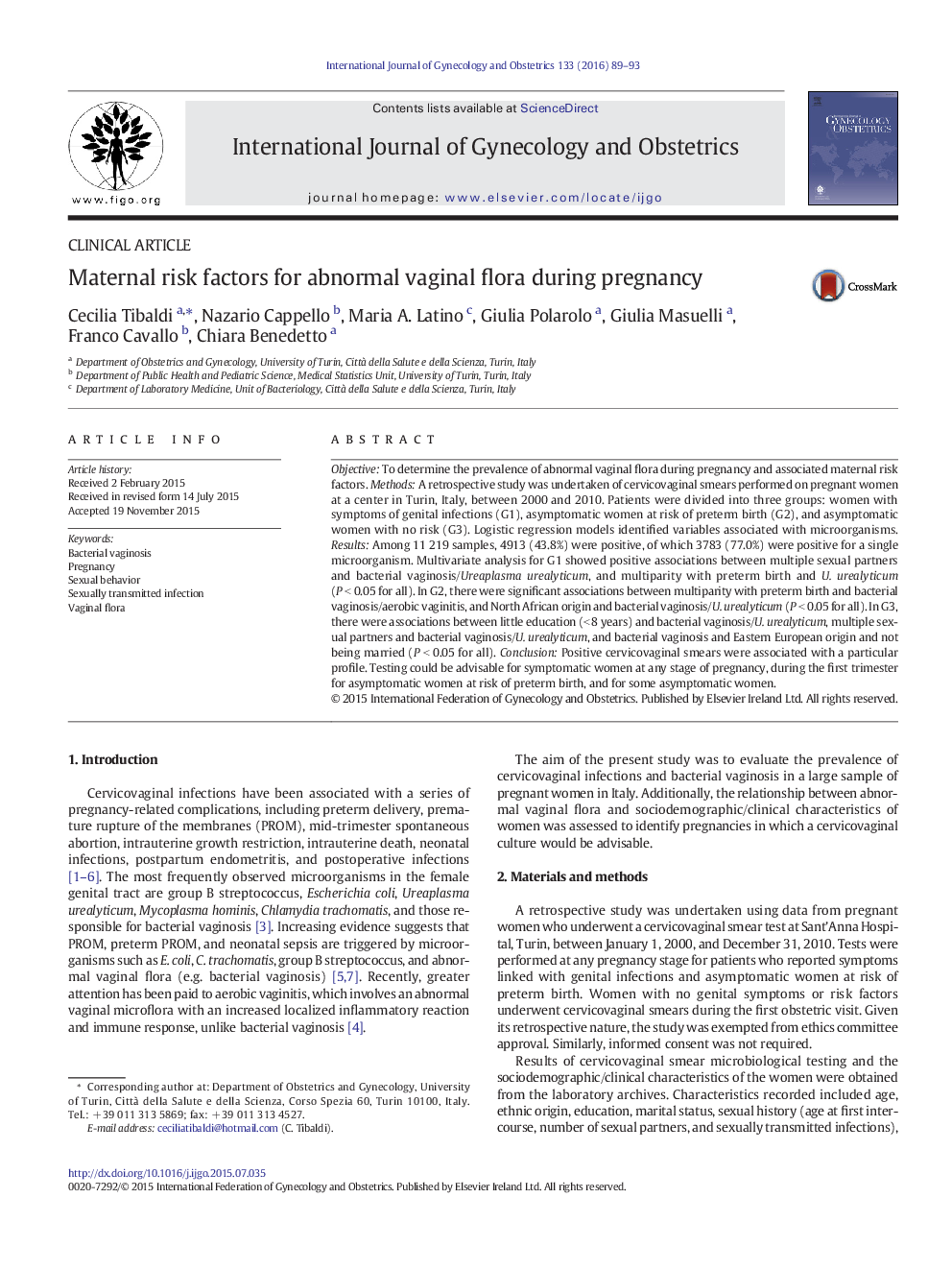| Article ID | Journal | Published Year | Pages | File Type |
|---|---|---|---|---|
| 3952154 | International Journal of Gynecology & Obstetrics | 2016 | 5 Pages |
ObjectiveTo determine the prevalence of abnormal vaginal flora during pregnancy and associated maternal risk factors.MethodsA retrospective study was undertaken of cervicovaginal smears performed on pregnant women at a center in Turin, Italy, between 2000 and 2010. Patients were divided into three groups: women with symptoms of genital infections (G1), asymptomatic women at risk of preterm birth (G2), and asymptomatic women with no risk (G3). Logistic regression models identified variables associated with microorganisms.ResultsAmong 11 219 samples, 4913 (43.8%) were positive, of which 3783 (77.0%) were positive for a single microorganism. Multivariate analysis for G1 showed positive associations between multiple sexual partners and bacterial vaginosis/Ureaplasma urealyticum, and multiparity with preterm birth and U. urealyticum (P < 0.05 for all). In G2, there were significant associations between multiparity with preterm birth and bacterial vaginosis/aerobic vaginitis, and North African origin and bacterial vaginosis/U. urealyticum (P < 0.05 for all). In G3, there were associations between little education (< 8 years) and bacterial vaginosis/U. urealyticum, multiple sexual partners and bacterial vaginosis/U. urealyticum, and bacterial vaginosis and Eastern European origin and not being married (P < 0.05 for all).ConclusionPositive cervicovaginal smears were associated with a particular profile. Testing could be advisable for symptomatic women at any stage of pregnancy, during the first trimester for asymptomatic women at risk of preterm birth, and for some asymptomatic women.
